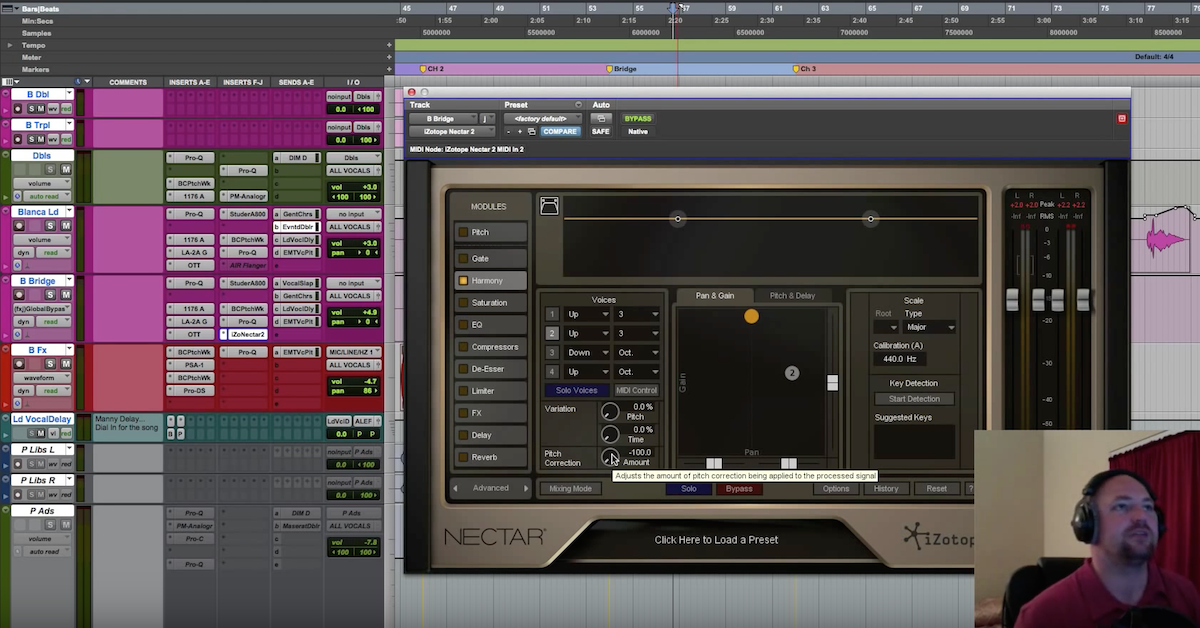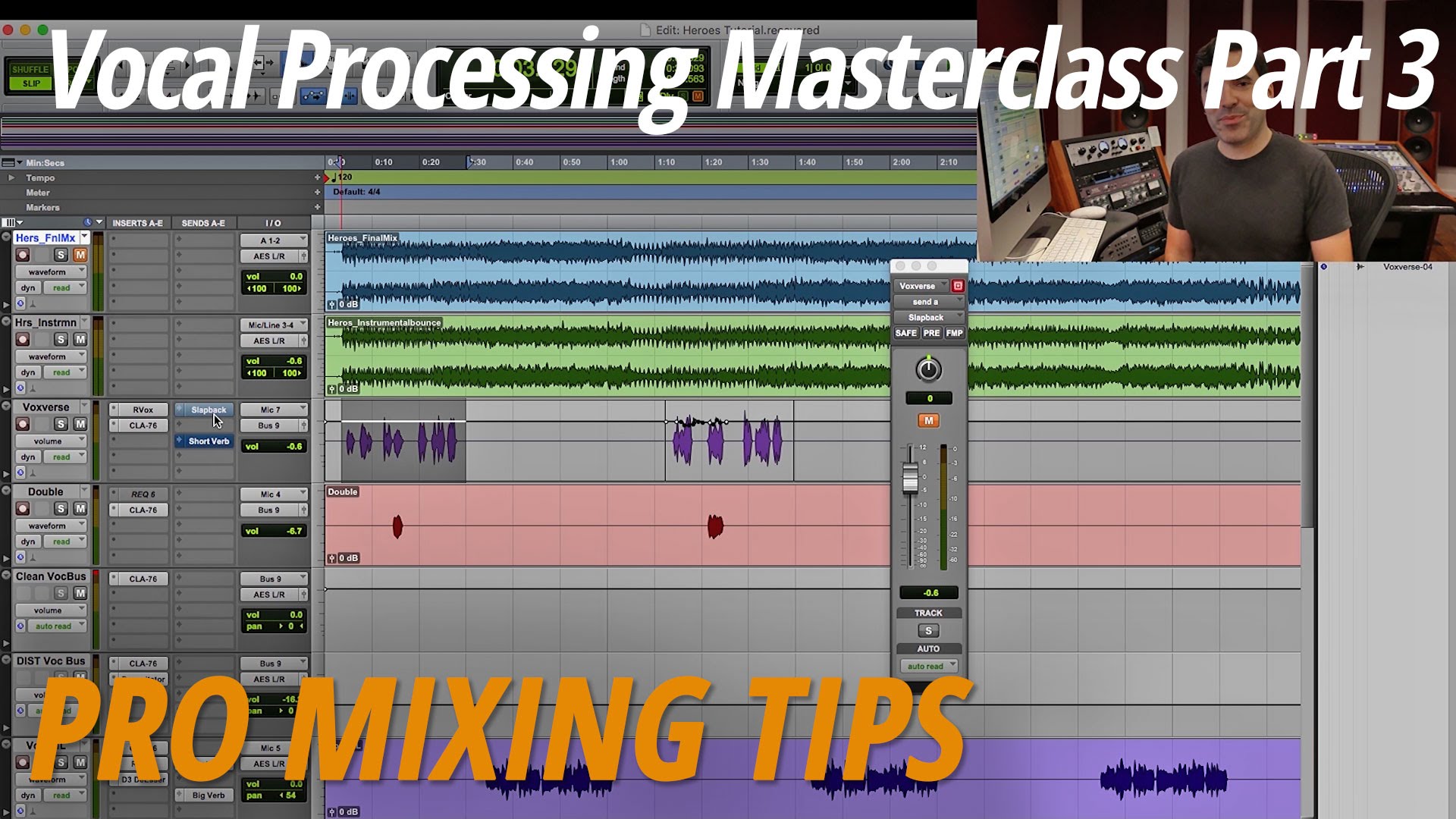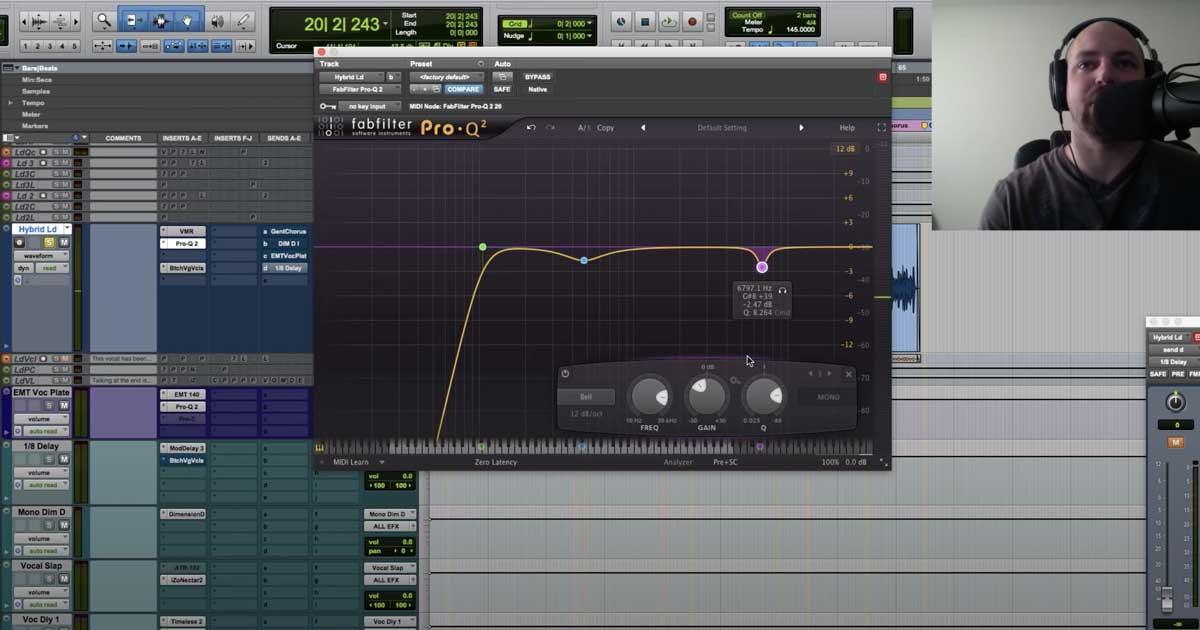6 Ways to Get Creative with Vocal Doubles
Article Content
➥ The new e-book from Cristofer Odqvist is available now
Vocal doubling (or ‘double tracking’) is a tried and true way to make your vocals more powerful and get a thicker, more polished or “produced” vocal sound.
Skillfully executed stacked vocal doubles — recorded fairly well, of course — with just a bit of compression on the vocal bus and not much else can give you a very familiar sound associated with expensive pop productions. It does, however, take some skill for the vocalist to pull it off.
It’s a bit like playing drums to a click track — if you have the skills it can tighten up the track, but if you don’t, it will probably ruin the recording and you’re better off playing without it.
In order to achieve a great double or triple take, you have to be super close in timing and pitch. If not, it will just sound unfocused and very “chorusy” at best — or like a group of drunken people singing together, at worst.
Tools like Melodyne and Autotune together with extensive editing (or software like VocALign) might get you in the ballpark, but chances are you’re better off going the “faking it” route from the beginning.
There are plenty of plugins for the job, but their sound might not be what you’re after, so here’s a few alternative ways to achieve that sought-after sound. Try them out and see what fits your production the best.
1. Tape Emulation
Some tape emulations like Wave’s KMT (formerly MPX) will mess with the timing of the signal in a dynamic way.
That can sometimes be enough to create a subtle doubling effect when used on a track together with the unprocessed track.
2. Pan and Time Shift
Duplicate the vocal track twice and pan the two new copies hard left and right. Shift one of the tracks – 10 to – 20 ms and the other track + 10 to + 20 ms.
Make sure you listen in mono and experiment with the time shift until you find a sweet spot where it sounds good in mono but still adds something in stereo.
Now, pitch shift one of the tracks – 7 cents (again, experiment with the amount) and the other track + 7 cents. Turn down the two duplicates a few dB and keep the original take panned center.
This will thicken the sound and make it sound more processed. This is an easy way to do a fake double but it is a static sounding double.
3. Pan and Pitch/Formant Shift
As an alternative to the previous example, you can slightly tune the duplicated tracks with Melodyne or Autotune.
Pan them and time-shift them the same as above. Pitch shift optional.
Instead of tuning the pitch you can try shifting the formants. This will keep the pitch intact and instead change the timbre of the voice.
4. Manual Shift
Copy the vocal track and shift the copied track forward a few milliseconds (-10 or so). Now insert a pitch shifter and delay on the track.
On the delay, turn the feedback and dry signal all the way down so all you hear is the delayed signal.
Write automation on the delay parameter for the whole track. We’re talking about a range of no more than 30 ms.
Since the whole track has been shifted forward 10 ms, letting the delay do 10 ms will shift the track back to where the original track is.
Keep the automation moving throughout the song and experiment with it to see what sounds best. You can always write automation for a few bars, tweak it until it sounds good and then copy/loop it to cover the whole song.
Now get to work on the pitch shift. Make sure it’s 100% wet so only the processed sound is heard and automate +/- 8 cents or more if desired. Experiment!
5. Alternate Take — 100% Wet
Take an alternative take of the lead vocal part and send it to a reverb or delay, but mute the dry signal.
In this scenario, it doesn’t have to be as perfect as with the dry doubled vocal but make sure to do some rough editing to make sure the phrasing is close enough.
6. The Real Thing
If you decide to do some natural doubling, here’s a tip on how to practice your craft:
- Make sure you get the best vocal take you can for the song.
- If the timing isn’t perfect, edit it until the phrasing is more or less exactly as you intended.
- Use Autotune or Melodyne and go at it hard tuning the life out of it. It shouldn’t necessarily sound natural or particularly pleasing — this is for practice not vocal production.
- Listen to the track, sing and try to mimic it as closely as possible.
This exercise is good for improving your intonation (pitch).
It’s very revealing in the sense that you can hear straight away when you’re not hitting the notes closely enough.
Practice your timing and intonation like this regularly and in time you’ll be able to perform much better natural double tracking.
Take Your Music to the Next Level
Making Sound is available now, a new e-book filled with 15 chapters of practical techniques for sound design, production, mixing and more. Quickly gain new perspectives that will increase your inspiration and spark your creativity. Use the 75 additional tips to add new sparkle, polish and professionalism to your music.






